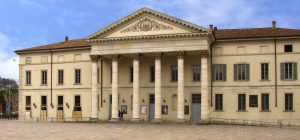
Raise your hand if you have ever thought with some horror about listening in religious silence to the singing (in general, totally obscure) of a heavy-set lady holding a lance and wearing a horn-adorned helmet on her head; or assisting in the lost love warbles of a tenor, forever separated from his soprano because of some dull and ferocious baritone. Yet, the magic of Opera, the Italian invention born at the end of the XVI century with the “Recitar Cantando”, is so powerful that few can resist, not even a heart of stone. More than once I have assisted in amazement to the ecstatic attention of the most diverse people – different for origin, tradition, culture – listening to the epic stories of Italian melodrama, such as the tragic life of a Spanish cigar seller or the representation of the Nibelungen tales.
One cannot – actually, must not – miss the opportunity of attending at least once in a lifetime, an opera performance – the important cultural, even more than musical, tradition that has lived its highest and most triumphant season in the XIX century. But as always, when we prepare ourselves for a high quality experience, it is essential to make sure that its standards of authenticity – the prerequisites of its value – will be respected.
Italy, Germany and France are the countries boasting the largest number of opera theatres. Especially in Italy, each city worthy of its name usually has its own theatre that, despite the cost and the complexity of these kinds of representations, offers high level performances.
Of course Como, too, has its own opera house, protected and enhanced over time by passionate Como opera lovers since the year of its founding, that same 1813 when the leading figures of this musical genre were born: both Giuseppe Verdi and Richard Wagner.
The theatre resides on the same grounds where a castle was first built during the second half of the 1200’s, the same castle that, after several adjustments and alterations, ended in ruins at the end of the 1700’s. (Guess who presided over the meeting that ratified the building of the theatre? Yes, Alessandro Volta himself). And it was on the evening of August 28th, 1813, that the curtain of Como’s Community Theatre was raised for the first time.
A “blest” theatre that, due to its collaboration with Milan’s world-famous Teatro alla Scala, has hosted the most important artists from every era. Among them, Giuditta Pasta and Malibran; Del Monaco and Di Stefano, Scotto and Kabaivanska. As well as the greatest directors, from Toscanini to Muti.
People who are fortunate enough to live near to, or to even just visit, this god-given gift known as the Lake Como District, must not miss the opportunity for at least a simple visit: opera theatres have something mysterious and fantastic when the lights are on and the box seats are empty. If one is particularly fortunate, one may happen to witness an actual orchestra rehearsal, or maybe the preparatory work of the concert master. Or even hear the complicated and strenuous exercises of the singers and their piano accompanist. After such an unexpected experience, perhaps even the light on the Lake will never seem the same.
